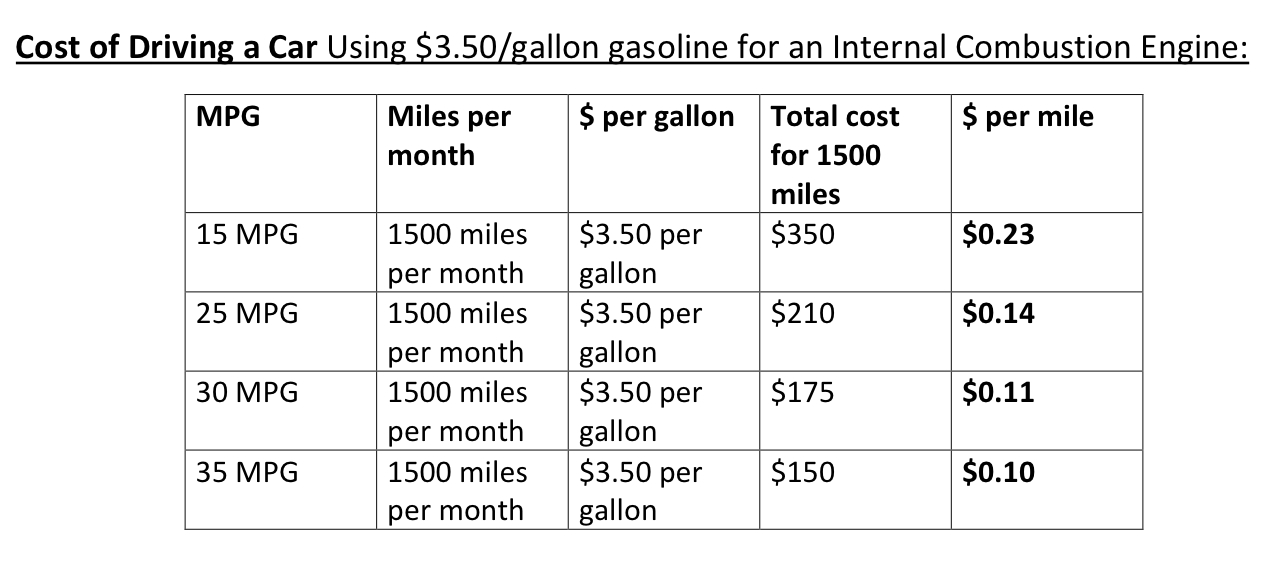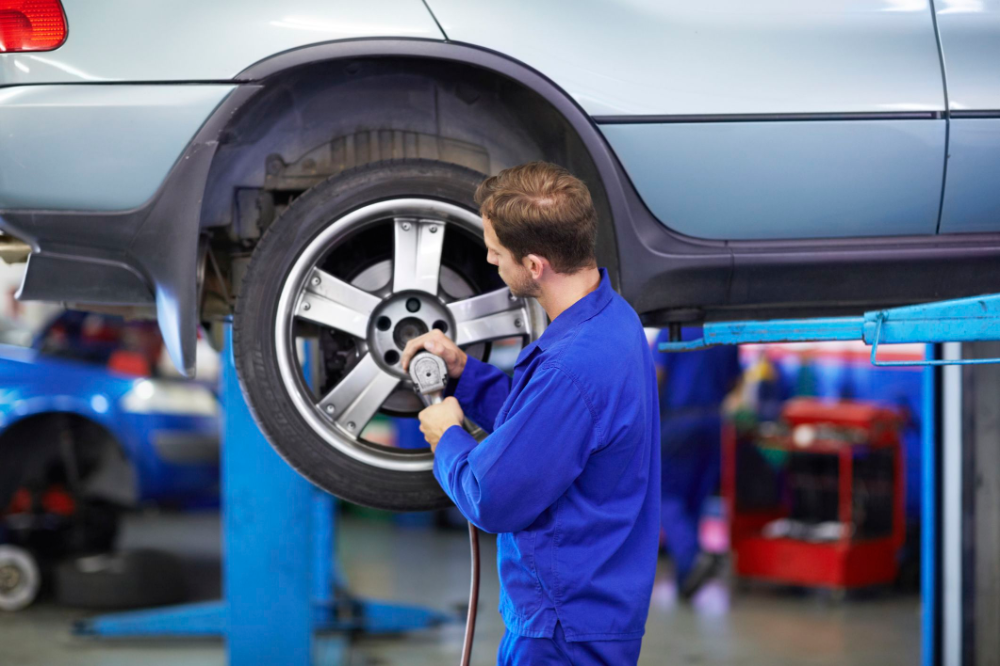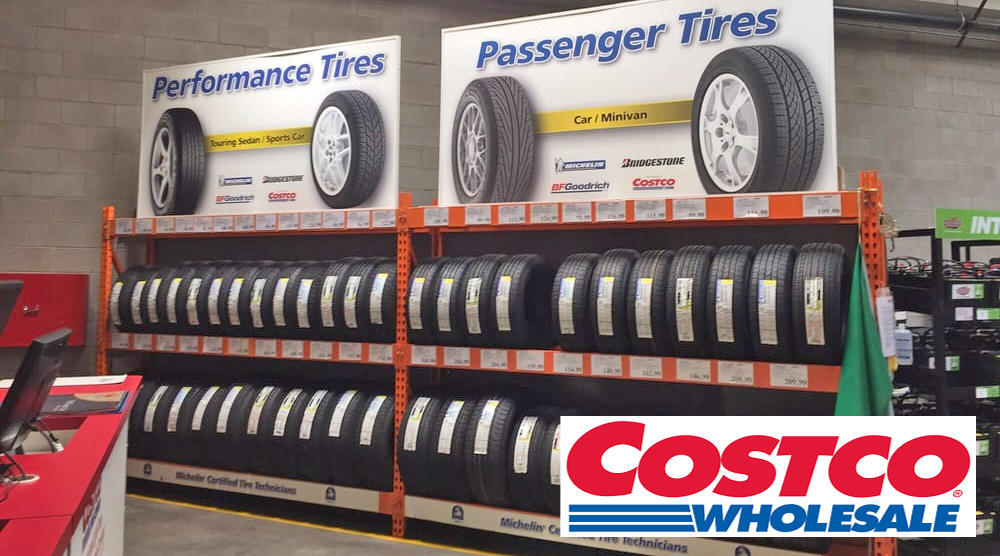Tire Storage Solutions knows that as the North American winter sets in, customers are beginning to worry about the necessity and pricing of tire storage. How much does it cost to store your tires, and what is the right way to go about it? What are the benefits of storing your tires professionally versus just keeping your summer and winter tire sets at home for easy personal installation? There are vital benefits to professional tire storage and seasonal storage systems, and it all begins with the price.
Countless ads for winter tires bombard you as winter approaches, and you may be asking yourself what you should be doing after seeing your twelfth ad for seasonal tires. The affordability of winter tires is the first question on everyone’s minds, but swapping out winter tires means finding a storage facility for your summer ones. Some guidelines exist to help you make a better-informed decision, influenced by industry standards and the necessity of winter tires.
We’ve gathered data based on averages within the automotive industry—the costs of winter tires and the average storage costs all factor into seasonal tire pricing. Winter tires, on average, cost between $80 and $200 per tire, based on the brand, features, and reliability. Per set of 4 tires, the average is between $360 and $800—which can seem like a sizable investment for any buyer. Customers want to know that their investment is protected, worthwhile, and necessary.
You shouldn’t be buying an entirely new set of winter tires every year, and you don’t have to. Management tire storage systems exist to keep your winter tires safe in a controlled environment until the months come back around when you need them. After knowing the price of your winter tires, you can view them as an important seasonal investment that will keep you and your family safe as well as keep your family on the road.
The expensive upfront initial cost of winter tires is off-putting for some, especially if you need a new set of rims to match. Before winter rolls around, it’s a good idea to keep an eye out for seasonal tire promotions and discounts, as well as qualified insurance rebates. While winter tire sets might be pricey, they are more than worth it due to their added safety. Maintenance and installation are also a factor, especially if you’re not confident in installing the tires yourself. With the cost of winter tires, installation, mounting, and upkeep, it’s not feasible to buy winter tires every year and worry about having to get them reinstalled. That’s where seasonal tire storage comes in.
Before winter rolls around, it’s a good idea to keep an eye out for seasonal tire promotions and discounts, as well as qualified insurance rebates. While winter tire sets might be pricey, they are more than worth it due to their added safety. Maintenance and installation are also a factor, especially if you’re not confident in installing the tires yourself. With the cost of winter tires, installation, mounting, and upkeep, it’s not feasible to buy winter tires every year and worry about having to get them reinstalled. That’s where seasonal tire storage comes in.
The national average for seasonal tire storage is between $40 and $100, depending on the tires, storage system, and other needs and factors. If you live in a small space such as an apartment or condo, you don’t have the time or space to worry about storage. Seasonal tire storage gives you peace of mind by knowing that your tires remain in a controlled environment right up until the time you need them, and with Tire Storage Solutions, you get the added benefits of our integrated systems that update you on tire status and communicate directly with your dealership so that you can have your tires picked up and installed all in one appointment.
Beyond price, you should remain intimately aware of tire storage conditions and who is handling the transportation and updates of your tire sets. TSS provides you and your dealership with real-time updates on the status of your tires down to the tread depth and rim condition, and our climate-controlled warehouses have the added benefit of staving off the possibility of tire failure.
TSS will update you or your business on tire insurance, reimbursement status, individual tires, and anytime they are transported. We use state-of-the-art TPMS systems to monitor tire pressure seasonally, and you can use our integrated web portal and app to monitor the tire’s status, longevity, and more.
Winter tires are a great investment. They keep you safe, keep your vehicle on the road, and improve your chances of making it through another tough Canadian winter. Whether you decide to invest in new tires or buy used tires, investing in seasonal tire storage is the best way to protect your investment all year long. Storing your tire sets in controlled warehouses and storage facilities greatly improves the chances that the tires will have better longevity and that you will retain more seasonal uses from each tire. You also have the added benefit of having your tire sets swapped out by professionals, saving you time and worry.
Storing your tire sets in controlled warehouses and storage facilities greatly improves the chances that the tires will have better longevity and that you will retain more seasonal uses from each tire. You also have the added benefit of having your tire sets swapped out by professionals, saving you time and worry.
With increased safety, better control, and ensured reliability, winter tires are the way to go. If you do a lot of winter driving, remove the obstacle of danger and benefit from the features presented in these tires that are specifically designed for the season. With seasonal tire storage, you can improve the mileage of your tires and your vehicle with tire sets that are being properly maintained all year long. In Canada, 76% of all citizens switch over to winter tires during these harsh months. That means 76% of Canadians are either buying or storing winter tires and ensuring that they are safer on the road. Storing winter tires greatly drives down the risk of potentially hazardous situations and saves you money in the long run.
Contact Tire Storage Solutions today and request a demo to see the difference our integrated systems can make. We are industry leaders in tire storage management and we will provide you with all the information you need so that you can rest easy about better tire storage. We work directly with dealers, automotive businesses, and tire repair shops as well, and there’s a good chance your local shop already works with us!
If you live in a snow state, then you’re probably used to having to switch your car’s tires twice a year. As a good general rule of thumb, your car should have summer tires in the summer and winter tires in the winter in order to get the best performance through every season. And while tire shops can easily switch the tires out for your, storing them is another part of the equation.
Fortunately, if you get your car worked on by your local dealership, they typically have ways to store your winter tires. But how do they keep track of them?
But how do they keep track of them?
While many car owners tend to take their cars to independent shops for repairs, many others go to dealership service bays instead. And while prices for labor and parts are usually higher at a dealership, they can act as a one-stop-shop for customers looking to get work done and their tires stored for the season.
The process is simple, if you need your winter tires to be stored for the season, then the dealership shop will unmount them and store them, and then mount and balance the summer tires on your car while you wait. You can even buy new tires while you’re there if needed.
Storing winter tires is not only beneficial for the customer, but it’s also beneficial on the business side of the equation as well.
According to the Tire Business, offering tire storage continually draws customers back to the dealership in addition to opportunities for additional vehicle services. However, Automotive News says that tire storage isn’t exactly a profit source for the dealership, but the profit source is the return business.
However, Automotive News says that tire storage isn’t exactly a profit source for the dealership, but the profit source is the return business.
RELATED: Saving Money on Cheap Snow Tires Could Cost You
Having the dealership store your winter tires is quite convenient for the customer, but for the dealership, it can be tough. Having to take inventory of all of these tires and then store them has become a challenge for some dealerships.
Automotive News reported that many dealerships in the Denver, Colo., area store around 300 to 450 different sets of tires every year, and as you can imagine, it can be tough to keep track of them all. In fact, there have even been customers that have complained about dealers losing their winter tires, which can be a nightmare for both parties.
A car tire in the snow. | (Photo by Andreas Rentz/Getty Images)Fortunately, there are services like InvenTire, which is a Colorado-based company that has created tire inventory management software so that dealerships can keep better track of their customer’s tires all year.
According to Charlie Doebbler, the COO of InvenTire, the company is currently providing its service to three dealerships in the Colorado area but is looking to expand in order to offer its tire inventory service via many more dealers nationwide since seasonal tire storage is beneficial for not only the customers but for dealers as well.
A car mechanic holds a winter tire at a garage. | FRANCOIS NASCIMBENI/AFP via Getty ImagesRELATED: Do You Need Winter Tires if Your Car Is All-Wheel-Drive?
Many of the dealerships that currently offer winter tire storage options are higher-end dealerships like Audi, Porsche, BMW, and Lexus stores. However, other more mainstream dealers should be following suit soon enough with the help of companies like InvenTire.
“We’re just getting started, but we’re looking to expand throughout the state and to anywhere people use snow tires,” Doebbler said. Hopefully, they will, since winter tire storage is an important service that many dealers and customers probably never thought they needed, but can benefit from it greatly.
Hopefully, they will, since winter tire storage is an important service that many dealers and customers probably never thought they needed, but can benefit from it greatly.
Quite an urgent problem for many car owners is the storage of winter or summer sets of tires. Many prefer the old method - storage at home. For these purposes, as a rule, various utility rooms, balconies, sheds, etc. are used. But, at the same time, few people remember the basic rules for storing tires that must be observed. Otherwise, the shelf life of tires is reduced several times.
 At the same time, at home, as a rule, tires are stacked and left like that for the entire storage period. As a result, this leads to the appearance of various deformations that affect the behavior of the car on the road. And again, such tires wear out much faster;
At the same time, at home, as a rule, tires are stacked and left like that for the entire storage period. As a result, this leads to the appearance of various deformations that affect the behavior of the car on the road. And again, such tires wear out much faster; In addition, there are many other small factors that together can have a negative effect on tires, significantly reducing their life. Therefore, our car service offers its customers a professional tire storage service.
Each client, having used the services of a tire fitting during a seasonal change of tires, can leave them for storage with us. Thanks to this service, there is no need to place tires at home.
Firstly, before being sent for long-term storage, tires are washed and treated with a special compound. In addition, they are packaged, which is already a guarantee that they will not be affected by aggressive environments.
In addition, they are packaged, which is already a guarantee that they will not be affected by aggressive environments.
Secondly, we use specially equipped rooms for storage, in which certain climatic conditions are constantly maintained.
Thirdly, all stored tires are regularly inspected and turned over in a timely manner. This eliminates the possibility of any deformations.
In order to use the services of seasonal storage of tires, we offer to conclude an agreement that specifies the exact name of the tires and their quantity. In this case, the client pays in full for the entire storage period. Note that if necessary, the period can be extended for any number of months.
| Wheel size | to R13 | R13-R15 | R16-R17 | R18-R19 | from R20 | |
|---|---|---|---|---|---|---|
| 1 month | 700 ₽ | 800 ₽ | 1 900 ₽ | |||
| 3 month | 1 300 ₽ | 1 700 ₽ | 2 400 ₽ | 3 100 ₽ | 3 800 ₽ | |
| months 6 months 6 months 6 months 6 months 6 months 6 months 6 months 6 months 6 months 6 months0003 | 2 500 ₽ | 3 200 ₽ | 4 600 ₽ | 5 800 ₽ | 7 100 ₽ | |
| 9 months | 3 600 ₽ | 9001 9001 | 7 300 ₽ | 9 400 ₽ | ||
| 12 months | 4 700 ₽ | 5 100 ₽ | 7 800 ₽ | 900 400 ₽ | 12 300 ₽ | |
| 900 ₽ | 1 000 ₽ | 1 500 ₽ | 1 700 ₽ | 2 000 ₽ | ||
| 3 months | 1,500 ₽ | 1 900 ₽ | 3,000 ₽ | 9004 4 600 ₽|||
| 6 months 6 months | 2 800 ₽ | 3 700 ₽ | 5 200 ₽ | 700 ₽ | 8 900 ₽ | |
| 9000 9 months 9000 9000 9000 9000 9000 9000 9000 9000 9000 9000 9000 9000 9000 9000 9000 4 800 ₽ | 6 900 ₽ | 8 300 ₽ | 10 700 ₽ | |||
| months 12 months | 5 500 ₽ | 6 100 ₽ | 8 700 ₽ | 10 600 ₽ | 1300 900 ₽ | 9000 specialized center Agree, it is very difficult to achieve such conditions in an ordinary garage that is not adapted for this. By handing over tires for storage to Mosavtoshina, you can be sure that all the required conditions for the safety of tires will be met. Upon acceptance, the tires will be inspected, washed, they will indicate damage to tires and wheels, they will offer to carry out repairs, or refuse further operation of the tires if they are unsuitable for their condition. Your tires will be identified by designation and model, by release date, by serial number (if any), they will describe the condition, they will issue a storage agreement. Trust us and we will save your money and your time! Dear customers, your tires are stored in remote warehouses. Seasonal Tire Storage AgreementArticles about the operation and maintenance of tires As a rule, any car owner has at least two sets of tires - winter and summer. Rubber storage conditions When asked how to store rubber, you can not ask friends or acquaintances for advice, do not search on specialized forums and websites (although this is a useful and necessary thing). It is enough to study the legislation in the field of state standards. In particular, GOST R 54266-2010 provides the necessary information on the storage conditions of automotive rubber.
Everyone understands that in a garage or in a country house, and even more so in an apartment, it is not always possible to achieve literal compliance with the requirements of GOST for the storage of tires. For example, if the tires are on the balcony, the requirement to keep the tires outdoors for a long time will not be met. On the other hand, frost up to minus 35 degrees is not terrible for tires, so you can not be afraid to damage a summer tire. The main thing is to protect the tire from precipitation and sunlight, because ultraviolet is very harmful, it changes the structure of rubber, reduces elasticity. As a conclusion, tires can be stored on the balcony, covered with waterproof material. It is important to provide a clause on the exclusion of tire deformation. In this case, it would be correct not to use cramped places, not to press down the rubber set with other objects, and to keep it on a flat surface. It is impossible to keep the tires standing up all the time, they can undergo irreparable deformation and only partially recover. Suspended tire storage excluded. Although this option of staying rubber is found in some garages. On the other hand, the wheel assembly can hang safely without much harm. Moreover, this method is the most successful for the wheels in the kit, the only thing is to reduce the pressure in the tires. Proper storage of tires means keeping them away from heating devices, including radiators and heaters. This is a very important note that must be strictly followed. Otherwise, under the influence of high temperatures over 30 degrees, the rubber may receive irreparable damage and deform. Car owners often ask how long it is possible to store different types of car tires in the lying position. There is a GOST rule that regulates this option for finding rubber in a warehouse or garage. However, it is not always necessary to follow it strictly. It will be correct to find the tires in the supine position. With regard to the service of storing winter or summer sets of tires, it is provided by many service stations that carry out tire fitting, as well as large centers selling car tires. Moreover, the wheels can also be stored together with the disks. As a rule, such a service provides for the location of tires or wheels in a covered hangar without heating. The main thing is that the basic rule of storage is observed - the temperature regime is maintained. As a general rule, car tires should not be near solvents or other chemical elements that can have a negative effect on rubber. It is also unacceptable to find nearby sources of ozone - transformers, electric motors and other equipment. Storage of winter tiresAfter the end of winter, for all car owners, there comes a period when it is necessary to change the winter set of tires to summer ones. At the same time, the fact of replacement causes a problem, and the need for proper storage of tires during the entire summer period of operation. The rules are simple:
Popular tires
Storing summer tires The procedure and rules for storing summer tires in winter are practically the same as for winter tires. Car tires may be stored vertically or horizontally in summer. At the same time, if the tire is complete with a disk, then it should not stand. The wheel assembly will properly hang on cables or ropes. Also, the correct position for a tire with a disc is lying horizontally. Wheels can lie in a stack of several pieces, no more than 4-5. If there is no other option for storing the wheels in the kit, except for standing, then you need to keep track of how long they are in one position and periodically turn them to change the place of pressure. It will be correct to change the position every 2-3 weeks. Wheels without rims must not be hung correctly, they can be deformed by prolonged lateral loads. It is allowed to store tires without rims in a stack, but not more than a month and in a stack no more than 5-6 pieces high. The most correct option is to place tires vertically:
The main condition is a flat surface, without sharp edges and protrusions, so as not to damage the surface of the wheel. It will also be correct to rotate the tires once every 2-3 weeks. In winter, temperatures can drop to very low levels. The main thing to remember is that the car rubber should not be allowed to stay at a temperature below 35 degrees, in which case its deformation is possible. It is best to store in the winter in a garage in compliance with the requirements indicated above. Storage on discs If you have two sets of wheels, for example, winter and summer, then you will be interested in how the tires should be properly stored in the garage or elsewhere. In this case, it will be correct if the wheels do not lie at all. The best storage with discs is hanging. To do this, the wheels must be thoroughly washed and cleaned of dirt, and also dried. It will be correct to treat the rubber with a special care compound. The pressure in the wheels is lowered to the level of 1-1.5 atmospheres. It is advisable to mark the wheels in order to understand where they were and change them after storage. In this case, you can correctly distribute the balance and prevent uneven rubber wear. It is also allowed to store wheels on rims in the garage horizontally stacked on top of each other. How much can be stored depends on the size of the wheel and its weight, but no more than 2 meters in height. Properly store on a flat surface, without corners and irregularities - on the garage floor or shelving. Storage without rims Storage of wheels without rims is no different from other options. The main difference in storing wheels without rims is the correct way to keep them upright. In this case, they stand on a flat surface, the main thing is to rotate them periodically by 20 degrees to prevent rubber deformation. The garage is an ideal place to store a seasonal set of wheels without rims. If, of course, the place allows and the basic requirements for temperature and humidity are maintained. They can stand on a special rack or floor, the main thing is the absence of bumps and sharp corners, otherwise you can easily damage the surface of the tires. If the garage does not allow keeping extra property in it, there are not enough normal conditions for a car, then you can keep tires on the balcony or in the pantry. The main thing is to withstand the temperature regime, properly store in direct sunlight (cover), avoid staying in conditions of high humidity or vice versa, excessively dry air. |